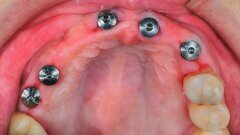Dr. Bhavdeep Singh Ahuja analyzes the first full budget of the Modi 3.0 government, highlighting its significant impact on the healthcare sector. The health sector has received a notable boost with a ₹90,958.63 crore allocation, marking a 12.59 percent increase over the ₹80,517.62 crore in the (revised estimates) 2023-24 budget.
The First Full Budget of Modi 3.0 is here in July 2024, delayed, courtesy of the General Elections in April - May 2024. The expectations were huge considering that the middle class has long been rooting for something tangible as inflation has gone up considerably in the past few years with no tangible relief whatsoever for them. As a healthcare sector inclusive myself, a few pertinent questions:
1. Is it a good budget?
2. Does it fulfill expectations regarding healthcare?
3. Does it allocate enough for healthcare?
4. Does it address the Ayushman Bharat initiative in the long term?
5. Does it offer something new or not?
and most importantly,
6. Does it succumb to the pressure of being a populist budget vs. continuing the reforms in previous budgets in line with the ‘Viksit Bharat 2047' dream?
And many more…
First things first. To me, it is a decently balanced budget overall but can I say the same about the health sector allocation, especially in addressing some of the questions piled up there above? Let us see!!
Although we can discuss the whole budget at length, for the sake of this review, let us keep our focus limited to healthcare:
FEATURES:
1. The GoI has continued its emphasis on tackling non-communicable diseases allocating funds for research in the healthcare sector and announcement of customs duty exemptions on three cancer treatment drugs viz. Trastuzumab Deruxtecan, Osimertinib, and Durvalumab are commonly prescribed in India for breast cancer, lung cancer, and bladder cancer respectively which will lower their import cost and make them affordable to cancer patients, thereby making a focused effort to make life-saving treatments easy and accessible.
2. Earlier in March 2023, the government had fully exempted Pembrolizumab (Keytruda), a Merck cancer drug used for cervical cancer, from basic customs duty.
3. The FM also proposed changes in the BCD (basic customs duty) on X-ray tubes and flat panel digital detectors for use in medical and dental X-ray machines under the phased manufacturing program. These adjustments will benefit domestic OEM manufacturers by reducing costs, encouraging local sourcing, helping bolster domestic production capacity, and enhancing competitiveness thereby supporting local manufacturing and innovation within the medical sector.
4. The government is also set to operationalize the Anusandhan National Research Fund for basic research and prototype development and bring in provisions for enhanced private sector-driven research and innovation at a commercial scale, with a financing pool of ₹1 lakh crore in line with the announcement made in the Jan. 2024 interim budget.
5. The government will develop digital public infrastructure (DPI) applications at the population scale for productivity gains, business opportunities and innovation by the private sector and health is one of the sectors included in the list of sectors.
6. The government will step up the adoption of technology towards digitalization of the economy (across sectors).
7. Many new medical colleges and sports infrastructure to be constructed/created in Bihar.
8. The Health Ministry has been allocated ₹90,958.63 crore, an increase from ₹80,517.62 crore in the previous budget.
9. The budget allocation for the AYUSH Ministry has been increased from ₹3,000 crore to ₹3,712.49 crore.
10. The Centre’s flagship scheme, Ayushman Bharat Pradhan Mantri Jan Arogya Yojana (AB PM-JAY), has got an allocation of ₹7,300 crore as compared with the previous allocation of ₹6800 crore.
11. However, there is no increase in budget allocation for the National Digital Health Mission, popularly known as Ayushman Bharat Digital Mission (ABDM), as the budget allocation remains the same at ₹200 crores.
12. Out of the ₹90,958.63 crore, ₹87,656.90 crore has been allocated to the Department of Health and Family Welfare and ₹3,301.73 crore to the Department of Health Research.
13. The budget allocation for schemes under the Department of Health and Family Welfare has been increased from ₹77,624.79 crore to ₹87,656.90 crore.
14. The government has allocated ₹36,000 crore to the National Health Mission (NHM). The budget allocation for the Indian Council of Medical Research (ICMR) has been raised from ₹2295.12 crore to ₹2,732.13 crore.
15. The budget allocation for the National Tele Mental Health Programme has been increased from ₹65 crore to ₹90 crore.
16. The budget has allocated ₹18,013.62 crore for autonomous bodies. However, for All India Institute of Medical Sciences (AIIMS), Delhi, the budget allocation has been increased from ₹4,278 crore to ₹4,523 crore.
17. The government has also allocated ₹2,143 crore as production-linked incentives (PLIs) for the pharmaceutical industry. The significant boost in fund allocation for health, including AYUSH, has underscored the government's commitment to health promotion, disease elimination, and strengthening public healthcare services.
PENDING:
Although some long-standing demands from the healthcare sector remained unaddressed in the current budget like:
1. Increasing the GDP spend on healthcare to 2.5%,
2. Prioritising healthcare as a national issue,
3. Promoting medical value travel in India,
4. Addressing indirect taxation,
5. Rationalising GST with a uniform rate and full input tax credit eligibility,
6. Removing or limiting the 18% GST on mental health services and allocating resources strategically to help India become a mentally resilient society
7. Removal of nil duty exemption on some of the medical devices to act as a further enabler for the ‘Make in India’ drive and enhance our global competitiveness. This was evident during Covid-19 when the Indian medical devices sector showed its resilience in manufacturing syringes, masks, oximeters, oxygen concentrators, and certain testing kits under the ‘Make in India’ initiative.
POSITIVES:
The up-skilling initiative announced in the budget is going to help the healthcare sector as well to tap the lucrative global market as currently, 24% of the foreign workforce in healthcare in the world is from India and the government targets exporting 300,000 healthcare workers, including doctors, nurses, and technicians, annually. The ‘Train in India’ for the world needs this up-skilling readily.
SYNOPSIS:
Gradually, to achieve social justice, the government intends to cover all eligible individuals through education and health programs. Reports indicate that cancer was responsible for 9.6 to 10 million deaths globally in 2023 and according to the Global Cancer Observatory (GLOBOCAN), India ranked third in cancer cases, following China and the United States, hence BCD (basic customs duty) exemption on cancer drugs is welcome along with X-ray tube duty reduction to increase ‘vocal for local’.
BOTTOM-LINE:
To answer the questions listed at the start from 1-6: Other than the salient features mentioned above, there is nothing much to cheer for the health sector in the Budget. The allocation amounts may have increased but overall, the share of health in the Union Budget comes down to less than 2% presently. There were more expectations, especially for the pending aspects but most remain unfulfilled. In a zeal to please the allies, the major chunk of medical colleges for populist options also goes to Bihar and not to the rest of the country. The budget may be overall balanced or decent in outlook, but it is disappointing to say the least, in terms of healthcare.
Topics:
Tags:
COVID-19 is having an unprecedented impact on the global economy, including that of the dental industry. Most dental clinics are shut and a few are offering...
COVID-19 is having an unprecedented impact on the global economy, including that of the dental industry. Most dental clinics are shut and a few are offering...
COVID-19 is having an unprecedented impact on the global economy, including that of the dental industry. Most dental clinics are shut and a few are offering...
COVID-19 is having an unprecedented impact on the global economy, including that of the dental industry. Most dental clinics are shut and a few are offering...
COVID-19 is having an unprecedented impact on the global economy, including that of the dental industry. Most dental clinics are shut and a few are offering...
Out of Rs 90,658.63 crore allocated for the health ministry, Rs. 87,656.90 crore has been allocated to the Department of Health and Family Welfare while Rs ...
The key themes that stand out from the budget announcements are a big focus on capital expenditure, promoting a greener economy, leveraging the impact of ...
Live webinar
Wed. 17 December 2025
4:30 pm IST (New Delhi)
Dr. Piet Haers Oral and Maxillofacial Surgeon
Live webinar
Wed. 17 December 2025
7:30 pm IST (New Delhi)
Prof. Hani Ounsi DDS PhD FICD, Dr. Amr Ghanem
Live webinar
Thu. 18 December 2025
2:30 am IST (New Delhi)
Dr. Melissa Vettraino Bachstein DDS
Live webinar
Thu. 18 December 2025
9:30 pm IST (New Delhi)
Live webinar
Mon. 22 December 2025
11:30 pm IST (New Delhi)
Live webinar
Wed. 14 January 2026
10:30 pm IST (New Delhi)
Dr. Théo Laplane, Dr. Robert Gottlander DDS
Live webinar
Fri. 16 January 2026
10:30 pm IST (New Delhi)



 Austria / Österreich
Austria / Österreich
 Bosnia and Herzegovina / Босна и Херцеговина
Bosnia and Herzegovina / Босна и Херцеговина
 Bulgaria / България
Bulgaria / България
 Croatia / Hrvatska
Croatia / Hrvatska
 Czech Republic & Slovakia / Česká republika & Slovensko
Czech Republic & Slovakia / Česká republika & Slovensko
 France / France
France / France
 Germany / Deutschland
Germany / Deutschland
 Greece / ΕΛΛΑΔΑ
Greece / ΕΛΛΑΔΑ
 Hungary / Hungary
Hungary / Hungary
 Italy / Italia
Italy / Italia
 Netherlands / Nederland
Netherlands / Nederland
 Nordic / Nordic
Nordic / Nordic
 Poland / Polska
Poland / Polska
 Portugal / Portugal
Portugal / Portugal
 Romania & Moldova / România & Moldova
Romania & Moldova / România & Moldova
 Slovenia / Slovenija
Slovenia / Slovenija
 Serbia & Montenegro / Србија и Црна Гора
Serbia & Montenegro / Србија и Црна Гора
 Spain / España
Spain / España
 Switzerland / Schweiz
Switzerland / Schweiz
 Turkey / Türkiye
Turkey / Türkiye
 UK & Ireland / UK & Ireland
UK & Ireland / UK & Ireland
 International / International
International / International
 Brazil / Brasil
Brazil / Brasil
 Canada / Canada
Canada / Canada
 Latin America / Latinoamérica
Latin America / Latinoamérica
 USA / USA
USA / USA
 China / 中国
China / 中国
 Pakistan / Pākistān
Pakistan / Pākistān
 Vietnam / Việt Nam
Vietnam / Việt Nam
 ASEAN / ASEAN
ASEAN / ASEAN
 Israel / מְדִינַת יִשְׂרָאֵל
Israel / מְדִינַת יִשְׂרָאֵל
 Algeria, Morocco & Tunisia / الجزائر والمغرب وتونس
Algeria, Morocco & Tunisia / الجزائر والمغرب وتونس
 Middle East / Middle East
Middle East / Middle East






















































To post a reply please login or register